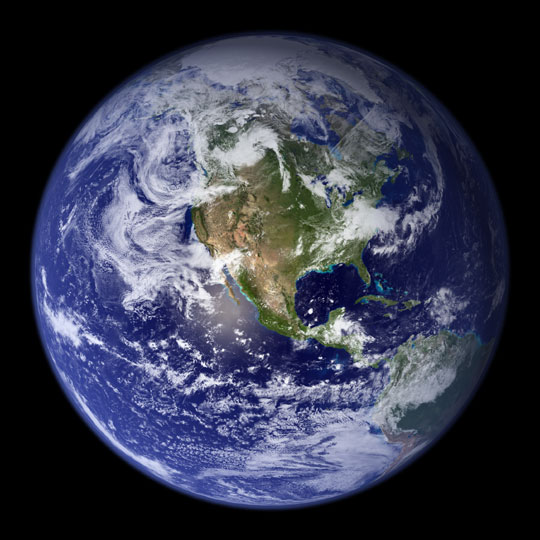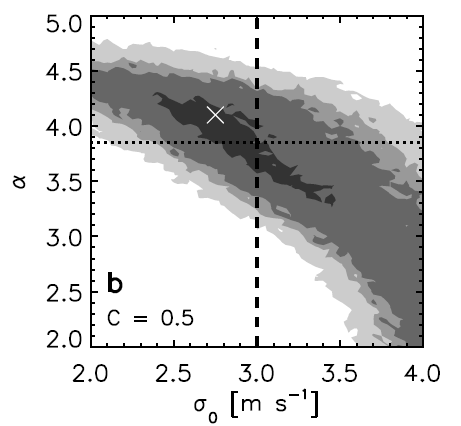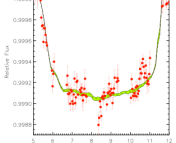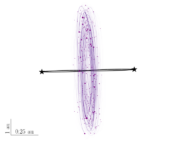Title: Formation History of HD106906 and the Vertical Warping of Debris Disks by an External Inclined Companion
Authors: Moore, Nathaniel W. H.; Li, Gongjie; Hassenzahl, Lee; Nesvold, Erika R. Naoz, Smadar; Adams, Fred C.
First Author’s Institution: Center for Relativistic Astrophysics, School of Physics, Georgia Institute of Technology, Atlanta, GA 30332, USA
Status: Submitted for publication, available on arXiv.
When early astronomers theorized how planets formed, they often used the Solar System as a model, mainly because that was all we had observationally available at the time. The thing is, the Solar System is pretty “well-behaved” – the planets are more or less in the same orbital plane, and are not too eccentric (i.e., they are closer to being circles than ellipses). However, as more exoplanets are found, astronomers begin to question their ideas for how planets formed. The binary system HD 106906, for example, has an asymmetrical debris disk and a widely separated (730 AU away from the stars – for reference, Earth is 1 AU away from the Sun!) planet that is not in the same plane as the disk. This system has an unusual architecture, and the authors of today’s paper try to theorize how this system formed. Understanding the formation of an usual system like this one allows us to expand our knowledge of planet formation beyond the simplicity of such well behaved systems such as our own!
Image Credit: NASA and A. Feild (STScI)
There are two main theories for the formation of planets: core accretion and gravitational instability (also called gas-collapse model). Figure 1 represents the two different scenarios. In both cases, the planets form from a protoplanetary disk – which means that the planets initially start in the same orbital plane. A system like HD 106906 challenges this notion, since it has a very massive planet far away from the disk, and in a pretty different orbital plane. The authors of this paper explore the idea that the planet HD 106906 b actually formed from the disk, but a recent (about 1-5 Myr (Million) years) close encounter with a free-floating planet knocked the planet away from the disk into an eccentric orbit, and the interactions from this close encounter actually caused the disk to become more eccentric as well.
The authors explore this idea using N-body simulations (a simulation of how bodies, in this case planets, interact over a period of time) of the system combined with simulations on how the observational data would look for this scenario. They then compare the simulations to real observations.
Companion and Disk Interactions
Before exploring the possible flyby simulations, the authors try to determine whether this system has been like this for a long time or if its current configuration is a result from a recent event. In order to do this, they simulate different variations of the planet’s eccentricity, inclination and semi-major axis. For the simulations, they include the effects of radiation pressure. They also use two different central body configurations: one with a binary star system and another with a single central body and an extra J2 potential term which emulates the binary system but is more computationally efficient. The main results from these simulations are shown in Figure 2.
The simulation results lead to the conclusion that the disk and planet have likely been in this configuration for only 1-5 Myr, which for the system’s age of 13 Myr is a quite recent event. If it had been there for longer than that, the simulations for 5 and 10 Myr would have been within the observational constraints from the real data.
Knock, knock. Who’s there?
Next, the authors simulate a close encounter of a 11± 1 Mj (Jupiter Mass) free floating planet with the native planet of the HD 106906 system and see if this configuration gives us what they see in our current observations. Figure 3 shows the possible outcomes of simulations of this (un)expected visit. The authors simulate 100,000 initial conditions and see their outcomes. These 100,000 conditions are obtained such that the closest approach distance of the planets is less than 50 AU (if it winds up being more than that, the initial condition is rejected).
Their final results are shown in Figure 4. From the figure, we can see that a few outcomes from either the free floating planet staying in the system or the native planet staying in the system agree with observations. The authors conclude that this is a possible explanation for the current architecture of this system. The close encounter only reproduces observational results 0.2% of the time, but this system is quite unusual – so a low probability of a system forming like this is expected!
Astrobite edited by: H Perry Hatchfield
Featured Image Credit: NASA




